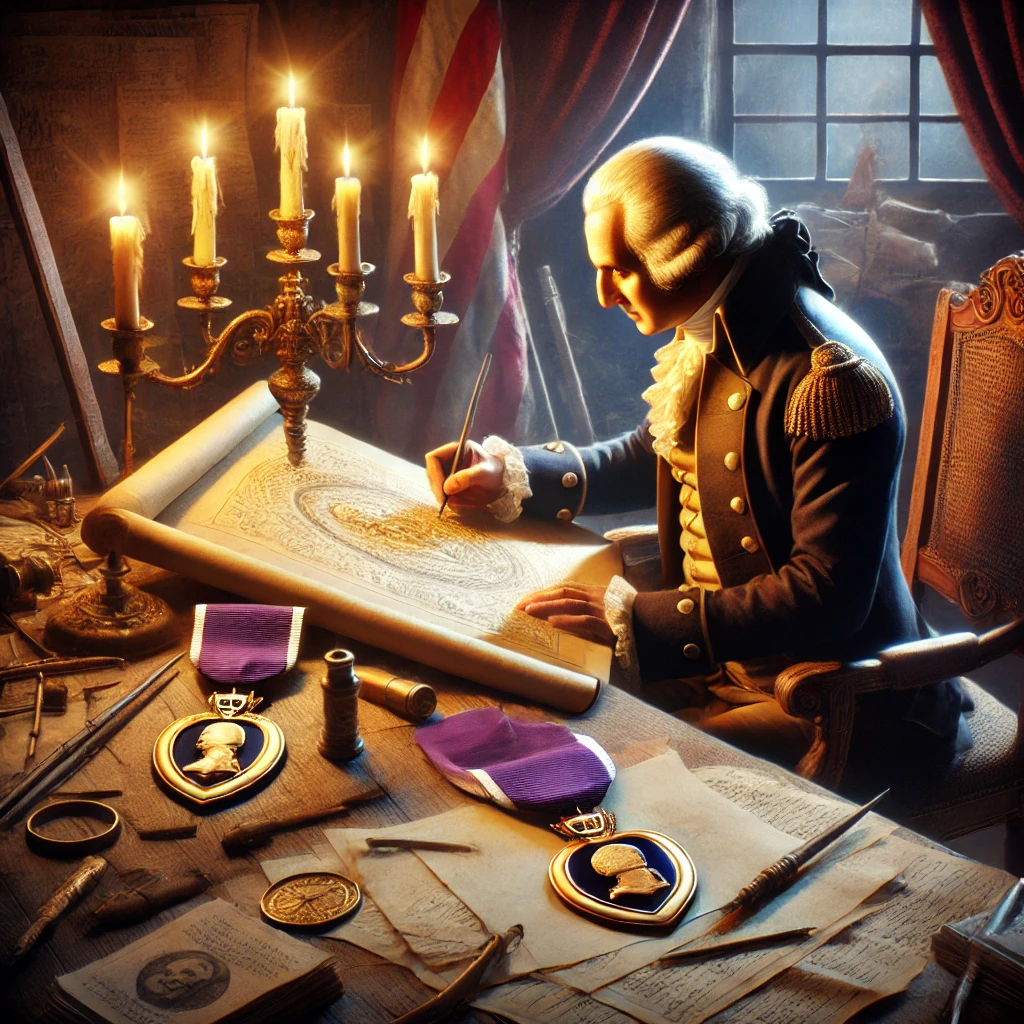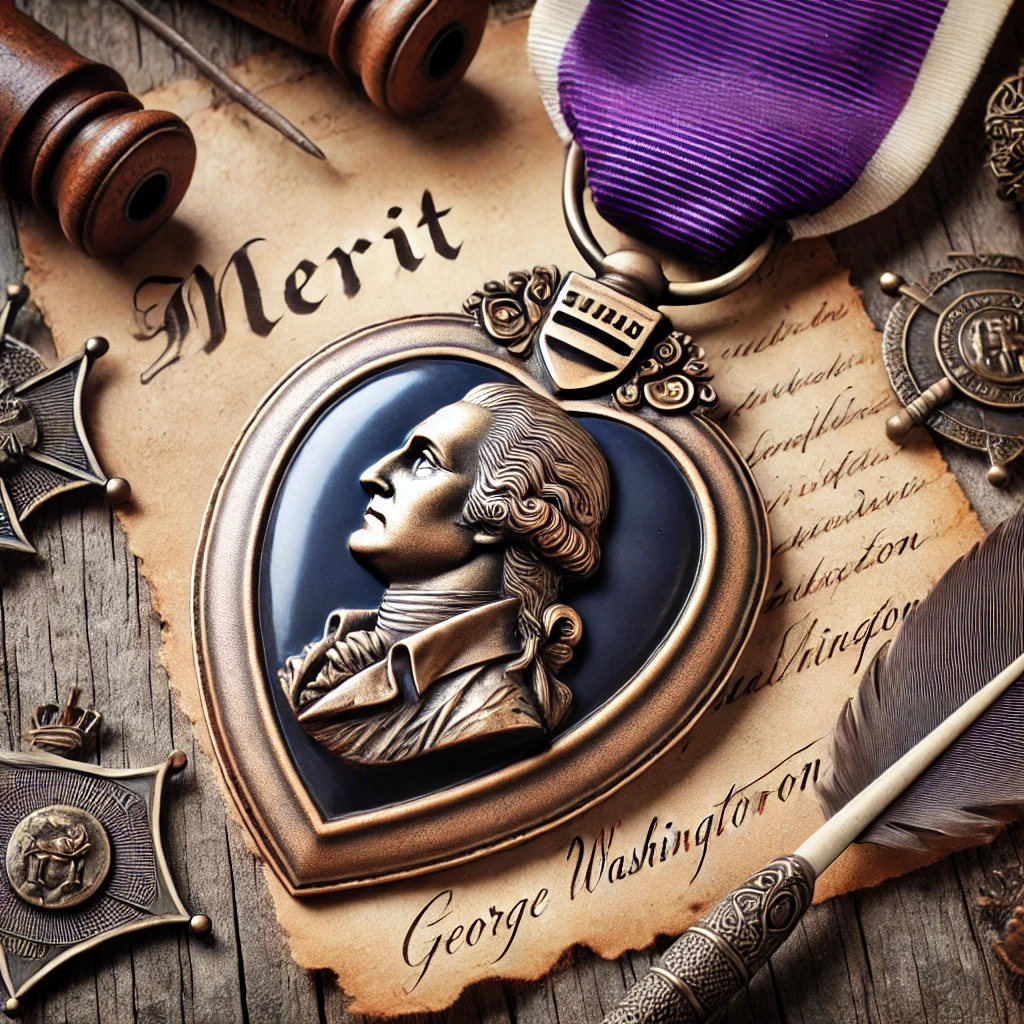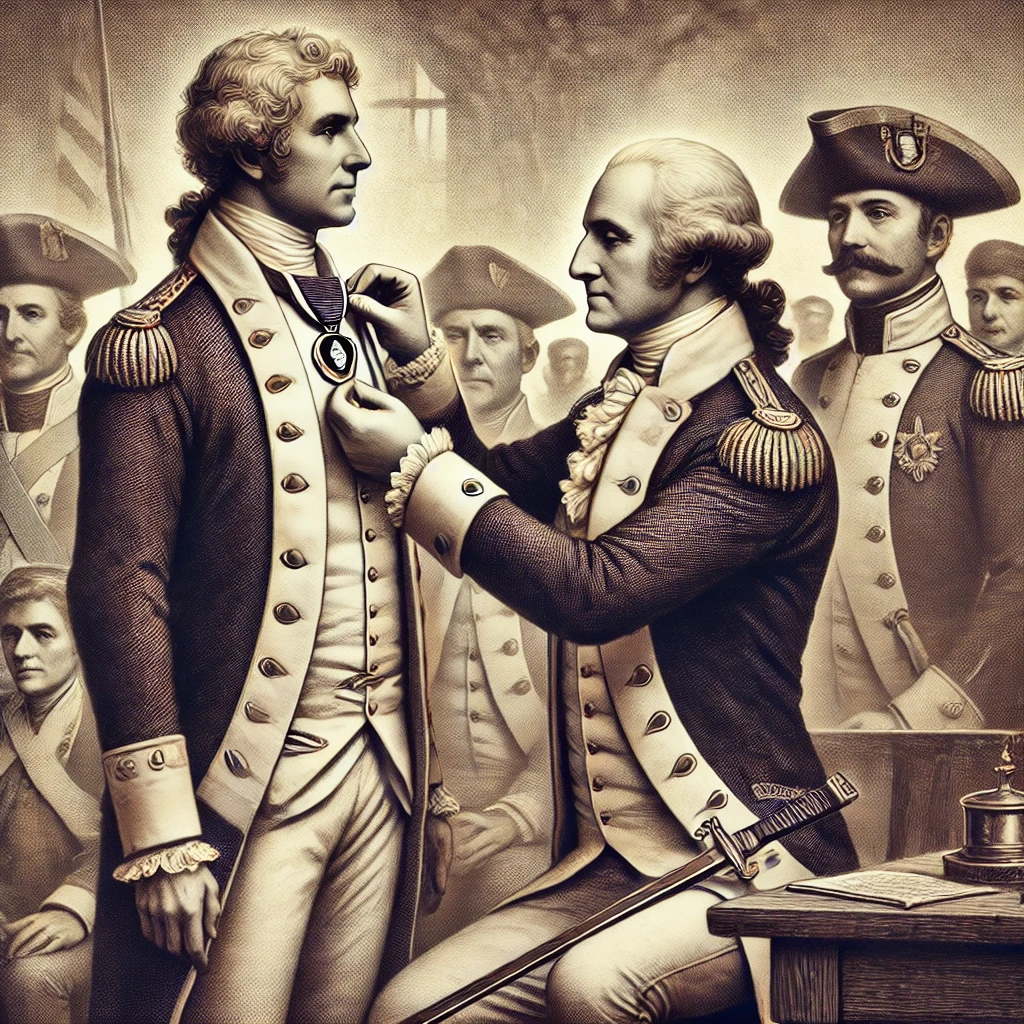On August 7, 1782, General George Washington established the Badge of Military Merit, which would later evolve into the Purple Heart. This decoration was created to recognize the bravery and sacrifice of American soldiers during the Revolutionary War. The original Badge of Military Merit was awarded to soldiers who demonstrated extraordinary valor in combat, marking a significant step in the formal recognition of military service and heroism.
The creation of the Badge of Military Merit was part of Washington’s broader efforts to instill a sense of honor and morale among his troops. The award was designed to provide a tangible symbol of recognition for acts of exceptional bravery and dedication. Although the Badge of Military Merit was not widely awarded in its early years, it laid the groundwork for future military decorations and honors.

Evolution into the Purple Heart
The Badge of Military Merit was largely forgotten after the Revolutionary War until it was revived and renamed the Purple Heart by President Franklin D. Roosevelt on February 22, 1932, to mark the bicentennial of George Washington’s birth. The new Purple Heart decoration retained the principles of the original Badge but was updated to reflect the changing nature of military service and the need for a formal system of awards in the modern era.
The Purple Heart is now awarded to members of the U.S. Armed Forces who are wounded or killed in action against an enemy force. The decoration symbolizes both the sacrifice of those who have been injured or lost their lives and the nation’s gratitude for their service. It has become one of the most esteemed and recognized military awards in the United States, representing the highest level of recognition for personal sacrifice in combat.

The Legacy of the Purple Heart
The establishment of the Purple Heart on August 7, 1782, and its subsequent evolution into a modern military award reflects the ongoing commitment to honoring and recognizing the sacrifices of service members. The decoration serves as a powerful symbol of bravery, sacrifice, and national pride, and its history underscores the importance of acknowledging the contributions and sacrifices of military personnel.
Today, the Purple Heart continues to be awarded to soldiers, sailors, airmen, and marines who are injured or killed in combat, maintaining its significance as a symbol of honor and sacrifice. The legacy of the Purple Heart is celebrated through various ceremonies and events, and its recipients are revered as symbols of courage and dedication. The decoration’s enduring presence in military culture highlights the values of heroism and sacrifice that are central to the nation’s understanding of military service.

The creation of the Purple Heart on August 7, 1782, represents a key moment in the history of military honors and reflects the evolving nature of recognizing valor and sacrifice. From its origins as the Badge of Military Merit to its modern status as a prestigious decoration, the Purple Heart embodies the enduring commitment to honoring those who serve and sacrifice for their country. The decoration’s legacy continues to inspire and uphold the values of bravery and dedication in the U.S. Armed Forces.
